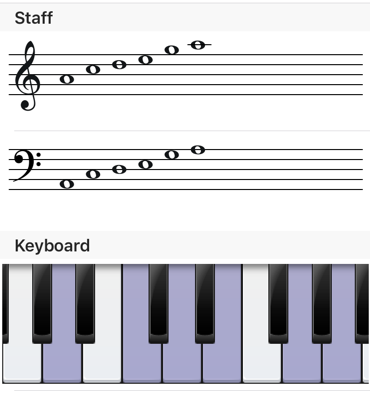Today in Songtive.com we’ll be analyzing a popular chord progression. It’s called the ‘Doo Wop Progression’, and is one of the most popular harmonic cycles ever! It consists of a I – VI – IV – V progression that defined an era, as you will see. Many songs going from jazz standards to timeless classics of pop ballads and rock and roll hits spawning around 50 years of music history! Wow! Now that’s something, doesn’t it? Let’s check out some examples:
- The Righteous Brothers – “Unchained Melody”
- Billy Joel – “Uptown Girl”
- Carly Rae Jepsen- “Call Me Maybe”
- Ben E. King – “Stand By Me”
- Green Day – “Jesus of Suburbia”
- The Police – “Every Breath You Take”
- Destiny’s Child – “Say My Name”
- Chubby Checker – “Let’s Twist Again”
- David Bowie – “Ashes to Ashes”
- Lana Del Rey – “Prom Song (Gone Wrong)”
That’s quite a list, don’t you think? And this is just a small part of the long repertoire containing this popular chord progression!
Where does it come from?
This progression is born out of the Doowop style, a genre which was very popular during the 1940s to the early 1960s. It consisted of a 3 to 4 part choir using close harmonies, usually male choirs. It takes some influence from gospel music and introduces the concept of making it just for fun, treating more relaxed subjects from everyday life, without the praising element of gospel music.
They relied on simple-but-effective chord progressions that helped to define the style, like the one we are discussing today!
Why does it work?
If look closely to the order of the chords, you can see that it resembles an authentic cadence, which is a device to give conclusion to a musical idea – as we already discussed in a previous article. The first part goes from I – VI – IV and all the chord contained in here are sharing common notes, which makes it sound good and coherent; the final part closes this musical thought with a cadence V – I which happens when you repeat the progression, making it a wonderful resource for a verse or a chorus because of its length.
A Musical Example
Let’s take Ben E. King’s ‘Stand By Me’ to analyze the effect this progression has. The overall impact ‘Stand By Me’ had in the music history is undeniable, and the mix of lyrics and 50s feel this progression gives to it is one of the elements that made it unforgettable:
From the start you can hear the bass setting up the Doo Wop Progression:
Let’s take it upon the analysis we talked before:
-
Break the first part into chord tones:
A major: A – C# – E
F# minor: F# – A – C#
D major: D – F# – A
As you can see every chord shares two common notes with the next one, making it sound great due to consonance principles we discussed in a previous article - Check the cadence:
When you repeat the chord progression you create a cadence going from V to I. Going from E major (E- G# – B) to A major (A – C# – E) makes the G# (a leading tone) go to A (the tonic of the song), thus making it a sure hit to close a musical phrase
That’s it! Now you can go and share your musical thoughts exploring a new chord progression that will quickly structure your music using Songtive for iOS/Android/Web! See you next time!


